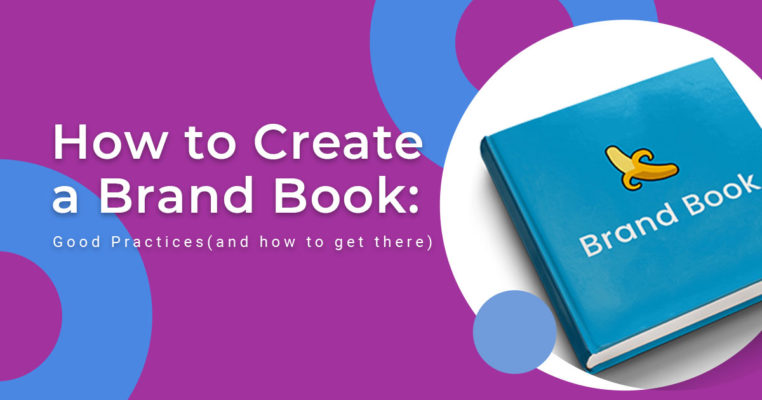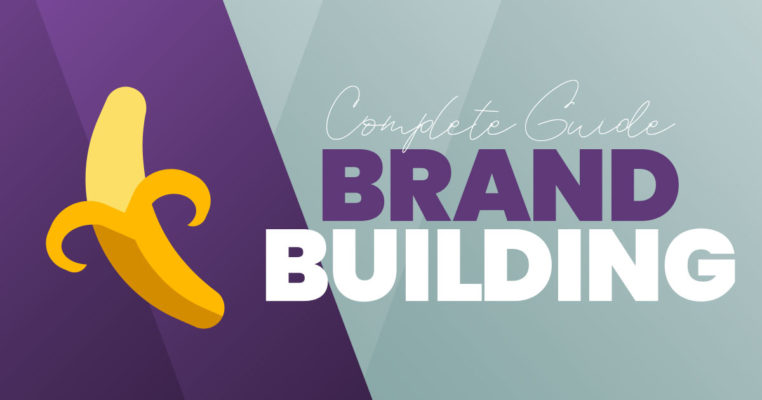Branding is a powerful tool for business success.
A strong, well-established brand can become an invaluable asset to your company and help you achieve greater visibility in the marketplace.
If you’re not sure how branding works or what branding trends are on tap for 2022, this blog post is for you!
What is branding?
Branding is essentially a company or organization’s public face. This includes a logo and other marketing materials that convey an image that makes your business easy to recognize when customers come into contact with it. This can include everything from your website homepage banner to store signage. There are so many other options as well.
Branding can also extend to the tone of your marketing materials, the language you use on social media, and even the way your employees dress and act when representing your company.
Each of these elements creates a unified brand identity that customers can count on.
The importance of business branding
So why is business branding so important?
Think about it this way: when you’re looking for a new product or service to solve a problem, what is the first thing you do? There’s a good chance that you’ll search for something familiar to you.
When your company has a strong brand identity, customers are more likely to trust your products and services over those of your competitors.
This is because brands are powerful symbols that help people make decisions quickly, which helps them save time in researching options before making purchases.
What’s more, if someone has already heard of your company, there’s a good chance they’ll be inclined to purchase from you again in the future.
All of this is why business branding matters so much for businesses – it helps them make money.
The 3 main components of business branding
Brand Strategy
Your brand strategy is the cornerstone of your business branding efforts. It outlines who you are as a company, what you stand for, and how you want customers to perceive you.
Developing a strong brand strategy is essential if you want to create a successful brand that stands the test of time.
Here are some things to keep in mind when creating your brand strategy:
- Your company’s mission and values
- The target audience you’re trying to reach
- What makes your company unique
- How do you want customers to feel when they interact with your brand
Brand Identity
Your brand identity is the visual representation of your brand. It includes your logo, typography, colour palette, and other design elements that make up your overall look and feel.
When creating your brand identity, it’s important to keep in mind who you’re trying to reach and what you want them to feel when they see your branding.
For example, if you’re targeting young adults, you might want to use bright colours and funky fonts in your branding. If you’re trying to convey a more professional image, you might opt for a more traditional look with muted colours and classic typography.
It’s important to be consistent with your business branding across all of your marketing materials. That way, your customers will know exactly what to expect when they interact with you and be able to identify your brand easily.
Brand Marketing
Brand marketing is the process of promoting your brand to attract new customers and keep existing ones. It includes everything from advertising and PR to social media channels and email marketing.
In brand marketing, the focus is not on highlighting an individual product or service, but on promoting the brand as a whole, with the products and services as proof points.
This is done by creating marketing materials that are aligned with your brand strategy and identity, and using a consistent tone and messaging across all channels.
It’s important to be strategic when planning your brand marketing efforts, as it can be costly if not done correctly. But when done well, it can help you build great business branding, a strong relationship with customers and increase sales.
The business branding trends 2022
Brand activism
In recent years, brands have been getting more and more involved in social and political issues.
This trend is only going to continue in the coming years, with brands taking stands on hot-button topics like immigration, gun control, and climate change.
While this can be a risky move, if done correctly it can help you build closer connections with your customers and create a more engaged following via business branding.
Authenticity and transparency
In a world where anyone can create a brand, authenticity has become one of the most sought-after qualities.
Customers want to feel like they’re dealing with real people, not faceless corporations, and they’re more likely to trust brands that seem authentic and honest.
This is why it’s important for businesses to be transparent about who they are and what makes them unique.
It’s also why you need to be consistent with your brand messaging across all of your social media platforms, emails, website text, etc.
Micro-influencers
Influencer marketing has been around for a while, but in 2022 we’ll see a shift towards micro-influencers.
These are people with smaller followings (usually less than 50,000), but who have high levels of engagement and trust from their followers.
Because micro-influencers are more niche, they’re able to connect with their followers on a deeper level and create more authentic relationships. This makes them a powerful tool for brands looking to enhance business branding.
Purpose-driven branding
We’ll see an increased focus on brands that have a clear purpose and mission.
Customers are looking for companies that align with their own values and beliefs, and they’re more likely to support brands that share their same ideals.
Purpose-driven branding can be a powerful tool for connecting with customers and building loyalty in 2022.
Personalization
As technology continues to advance, we’ll have more and more data available about our customers.
Brands will be able to use this information further to create customized marketing messages that are hyper-personalized for each customer.
This is a huge opportunity for businesses – being able to communicate with your customers on an individual level can help you increase retention rates and build stronger connections with them.
Hybrid events
As the world becomes more and more digital, we’ll see a shift towards hybrid events.
These are events that combine online and offline elements, giving people the opportunity to participate in different ways depending on their preferences.
This is a great option for businesses because it allows them to reach a wider audience at a lower cost. It also helps create a more engaged and participatory event experience.
Branded memes
Because memes are visual, relatable, and easily shareable on social media platforms like Facebook and Twitter, they’re a great way for brands to connect with their customers.
As this trend rises, we’ll see more branded memes – creative content that uses a meme format to tell a story or communicate an idea about your brand.
They can be used in pretty much any marketing context, so it’s something businesses will want to watch out for. Because memes are typically light-hearted and fun, they’re often seen as more trustworthy than traditional advertising material, which is why marketers should take advantage of this opportunity..
Paid newsletters
More and more people are switching to paid newsletters as their main source of news.
As this trend continues, brands will want to make sure they have an email newsletter set up.
This is a great way for businesses to stay top-of-mind with their audience, keep them engaged, and build trust through consistent communication.
Being inclusive
We’ll also see an increased focus on brands being inclusive – creating products and services that are accessible to all.
This is important for businesses because it helps them build trust with their audience, leading to stronger customer loyalty rates.
Immersive brand experience
Immersive brand experiences will become more common among brands. These are experiences that go beyond the traditional marketing touchpoints and create a fully engaging environment for customers.
This can be done in a number of ways, but it typically involves using new technologies like VR or AR.
It’s an exciting way for businesses to connect with their customers and create a memorable experience that they’ll want to return to again and again.
10 steps to build business branding
1. Find a purpose
Before you can start branding your company, you need to find its purpose.
What is the mission of your business? What do you stand for? Why do you exist?
When you have a clear purpose, it makes it easier to develop a brand strategy and identity that aligns with it.
Helpful here might be the golden circle concept.
The concept is visually explained through three main layers: The “WHAT“, “HOW”, and “WHY“.
- The “WHAT” is a clear answer to the question: What can people expect from our brand?
- The “HOW” is an even more specific response to what makes your company unique. It’s how you create a competitive advantage and give customers something that no one else does.
- Finally, the “WHY” is the purpose behind your company’s “WHAT” and “HOW.” It provides insight into why you do what you do, fills in more detail than just the surface-level explanations of WHAT and HOW, and gives customers a sense of who you are as an organization.
By doing this, you’re able to develop a purpose statement that represents all three of these elements. For example, if your business is an environmentally-conscious coffee shop in San Diego, its purpose might be something like:
“Our purpose is to provide our customers with the most delicious coffee while giving back to local ecosystems and communities through sustainable practices.”
This creates a clear identity for your company, including its values, product offering, and how it wants to be perceived by consumers.
2. Develop a value proposition
Your value proposition is a statement that explains the benefits of using your product or service.
It should be clear, concise, and easy to understand. For example, Coca-Cola’s value proposition might be “Delicious drinks that make you feel good.”
This tells customers what they can expect from Coke and why they should drink it over other beverages.
Your value proposition should be at the heart of all your marketing materials, as it’s what will persuade people to buy from you.
If you’re not sure what your value proposition is, or how to make it stand out, try using the PEST analysis. This tool assesses a company’s political, economic, social, and technological environment to help determine its strengths and weaknesses. From there, you can develop a value proposition that targets those specific areas in your business branding.
3. Research competitor brands
It’s important to understand your competition and their marketing strategies before starting a business branding campaign. This will give you an idea of the market landscape, including what competitors are doing well and not so well. And it can help provide insight into how to position yourself in comparison with them.
When creating visual materials such as infographics or social media posts, you can look at what competitors are doing in these spaces and develop ideas around that.
Try using social listening tools like Mediatoolkit to monitor brand mentions across the web. This allows you to identify how your competition is talking about their products or services online, allowing for more insight into positioning strategy.
For example, if they’re emphasizing the environmental benefits of their products, you might want to focus on your customer service instead. If they’re emphasizing low prices, you could focus on the quality of your product.
The key is to find what makes your company unique and emphasize those aspects in your business branding.
4. Identify your target audience
It’s important to have a clear idea of who your target audience is before starting a business branding campaign. This will help you develop messaging that resonates with them and creates an emotional connection.
When creating visuals for your brand, make sure they’re attractive to your target audience and fit with their lifestyle.
Try to create a brand buyer persona, which is a fictional representation of your target customer. This will help you develop messaging and visuals that are more likely to resonate with them.
For example, if most of your customers are young professionals, then you might want to focus on creating an energetic and modern brand identity. On the other hand, if your customers are mostly retirees, you might want to focus on developing a more classic and timeless look.
It’s important to note that your target audience will likely change over time, so be prepared to adapt your branding accordingly.
5. Describe the key qualities and benefits of your brand
Once you’ve developed a clear brand identity, it’s important to communicate the key qualities and benefits of your product or service.
If you rely on conscious business branding, this means focusing on the rational benefits of your product or service.
This might include its functionality, ease of use, or cost. Meanwhile, if you use subconscious branding, it’s important to focus on the emotional benefits instead.
These could be things like feeling good about yourself when using a particular brand or feeling like you’re part of a community.
Either way, it’s important to be clear about what makes your product or service unique and why customers should choose it over the competition.
Make sure your business branding is consistent across all channels, from your website to your social media profiles. This will create a unified look and feel for your brand that customers will recognize.
6. Form your unique brand voice
Your voice is the way in which you communicate with customers on social media and through other marketing materials. It can also help create more personality for your business overall.
For example, if part of what makes you unique is trustworthiness or professionalism, then that should be reflected in your voice. On the other hand, if you want to come across as more fun and casual, then you might want to use a more relaxed tone.
The key is to find a tone that feels authentic for your brand and that customers will enjoy engaging with. You can also test different voices out on social media to see which ones generate the most positive response.
7. Build your brand story with business branding
A brand story is a narrative that helps communicate the essence of your product or service. It should be based on research about what makes your company unique, and it should connect with customers at an emotional level.
This can also help create more credibility for your business, which will encourage potential customers to have greater trust in your products or services.
Companies like Apple have become incredibly successful at creating brand stories that resonate emotionally with consumers, making the company one of the most valuable in the world.
A brand story doesn’t need to be extremely complicated. It’s simply a way of helping customers understand why you do what you do and your overall vision for the future. The important thing is to make it easy for customers to connect with your brand and share your story.
8. Design visuals that convey your brand identity
Once you’ve worked to establish a clear message about what sets your business apart, it’s time to think about how you’ll communicate that in the visual realm.
There are many ways in which businesses can use visuals to create their branding – everything from logos and illustrations to video marketing content or blog posts for social media.
The key is to create visuals that are immediately recognizable as your brand and that resonates with your target audience.
9. Integrate your brand throughout your business
From the very beginning, make sure that every element reflects the overall goals for your branding.
This can be a challenge, but it’s important to stay focused on the overall goal of your branding and make sure that all aspects of your business are working together to achieve it.
One way to ensure this is by using a brand style guide. This document will outline how each visual and storytelling element should be used across all marketing materials so that your branding remains consistent over time.
The brand book should be created with the involvement of key members from across your business to ensure that it’s truly representative of what you’re trying to accomplish as a company.
10. Monitor your brand identity
Many businesses find that their branding needs change over time as the company grows and changes. For example, a small business might start out with an informal voice that appeals to young customers but may want to adjust this tone as the business matures.
It’s important to constantly reassess your business branding and make changes as needed to ensure that you’re continuing to reach your target audience in the most effective way possible.
One great way to do this is by using marketing analytics tools to track how customers are interacting with your branding. This data can help you understand what’s working and what might need to be tweaked.
Business branding for the win!
A strong brand is essential for any business looking to succeed in 2022 and the coming years. By following the tips and steps outlined in this guide, you’ll be well on your way to creating a branding strategy that will help you reach your target audience and grow your business.
Business branding FAQ
What is the difference between branding and marketing?
Branding doesn’t only encompass the entire process of promoting your product, it also includes what you’re offering to customers outside of that transaction.
Additionally, branding is about shaping customer perceptions so that they come to see your company as the best solution for their needs –
Marketing, on the other hand, is more narrowly focused on acquiring new customers and generating revenue from them.
What’s the point of business branding?
A strong, well-defined brand can help you achieve a number of business objectives, including increasing visibility, acquiring new customers, differentiating your product from the competition, and building customer loyalty.
How do I create a brand identity?
The first step in creating a brand identity is to develop your brand strategy. Once you have that, it’s time to think about what visual elements are most important for conveying that message.
Then, you’ll need to create a style guide that will help ensure your visuals are consistent across all channels, profiles, or web creators. You can also use it to educate employees and partners on how to properly represent your brand.
Is branding important for small businesses?
Yes, branding is just as important for small businesses as it is for large enterprises. In fact, small businesses often have an edge over big companies since they can quickly communicate what makes them unique.
What should I include in my branding kit?
Your branding kit will vary depending on the customers or clients you’re targeting and where they spend their time.
However, it’s a good idea to include your logo files, fonts, brand guidelines, and colour palette. You may also want to include some marketing materials, such as a fact sheet or case study.
If you want to know more about how to create a brand book, check out this article: How to create a brand book: X Templates and Examples.
What are some common business branding mistakes?
Some of the most common branding mistakes include:
- not having a clear strategy,
- not targeting the right audience,
- and not developing a unique voice or story.
Ready to get your brand out there?
At SociallyInfused Media, we bring brands to life. Our branding process ensures that your business has a unique story, strategy, and visual brand identity. To learn more about our process and how we can help you grow your audience and your enterprise, contact us today!





